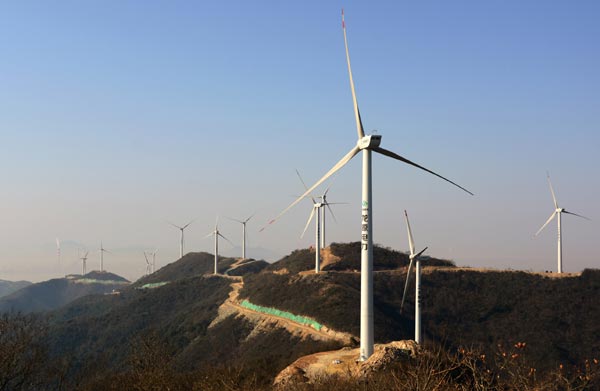China takes the lead in renewable energy, as cost-effectiveness improves
Updated: 2016-11-01 10:47
By YANG ZIMAN(China Daily)
|
|||||||||
 |
|
A wind farm in Zhoushan, Zhejiang province. [Photo/China Daily] |
China's renewable energy investment constitutes one-third of the world's investment in the area, said Adnan Z. Amin, director-general of the International Renewable Energy Agency.
China's total investment in renewable energy last year was $102.9 billion, up 17 percent from the same period the year before, said Amin at the International Forum on Energy Transitions held in Suzhou from Oct 30 to 31.
International investment in renewable energy was $330 billion last year.
"China is taking the lead in renewable energy development. Last year, China's wind and hydropower newly-installed capacity accounted for more than half of the world's total. Its photovoltaic newly-installed capacity accounted for one third of the world's total," he said.
The key to renewable energy development is to lower the costs. The infrastructure cost of photovoltaic power has gone down by 70 percent from 2005, said Qu Xiaoye, president and founder of Canadian Solar Inc based in Ontario, and it needs to drop further.
"China's photovoltaic power accounts for 1 percent of the country's total power. In Germany, the proportion is 7 to 8 percent. With effective cost reduction, photovoltaic power has great room for growth," said Qu.
According to Qu, every one percentage point reduction in cost will lead to 5 percent reduction in price per kilowatt hour. This is mainly to be achieved by technological research to make the solar panels more cost effective.
Qu said that the on-grid price of photovoltaic power might be lowered to the same level as fossil fuel-fired power by 2022.
"Another major cost is financing. Most of the photovoltaic companies lease facilities through financial leasing, which takes up 40 percent of the revenue. Therefore, a more flexible and diversified financing system is needed for renewable energy," said Qu.
According to a report by IRENA released in June, the average costs of photovoltaic power are going to drop by 59 percent by 2025, compared with the 2015 price of $0.5 per kilowatt.
Oceanic and land wind power costs are expected to go down by 35 and 25 percent respectively by 2025, according to IRENA.
China has pledged to increase its share of non-fossil fuels in primary energy consumption from 12 percent in 2015 to 15 percent by 2020 and 20 percent in 2030.
In order to achieve this goal, the wind and photovoltaic integration into the national grid would need to be at least 400 million kilowatts in 2020 and 1 billion kilowatts in 2030.
Related Stories
Renewable energy capacity exceeds fossil fuels in Gansu 2016-10-21 16:42
G20 ministers highlight renewable energy in Beijing communique 2016-07-03 13:11
Renewable Energy Law of the People's Republic of China 2016-04-15 11:26
China sets targets for local renewable energy use 2016-03-04 00:18
Green bonds issued for renewable energy 2016-02-04 10:48
Today's Top News
Li promotes SCO bank, free trade
High Court: Parliament must vote before Brexit
Court to instruct how to trigger formal EU exit
Premier emphasizes fight against terror
Italian authorities vow to rebuild earthquake-hit areas
Li arrives in Kyrgyzstan for visit, SCO meeting
Xi affirms one-China policy
France to begin moving migrant minors from Calais
Hot Topics
Lunar probe , China growth forecasts, Emission rules get tougher, China seen through 'colored lens', International board,
Editor's Picks

|

|

|

|

|

|







